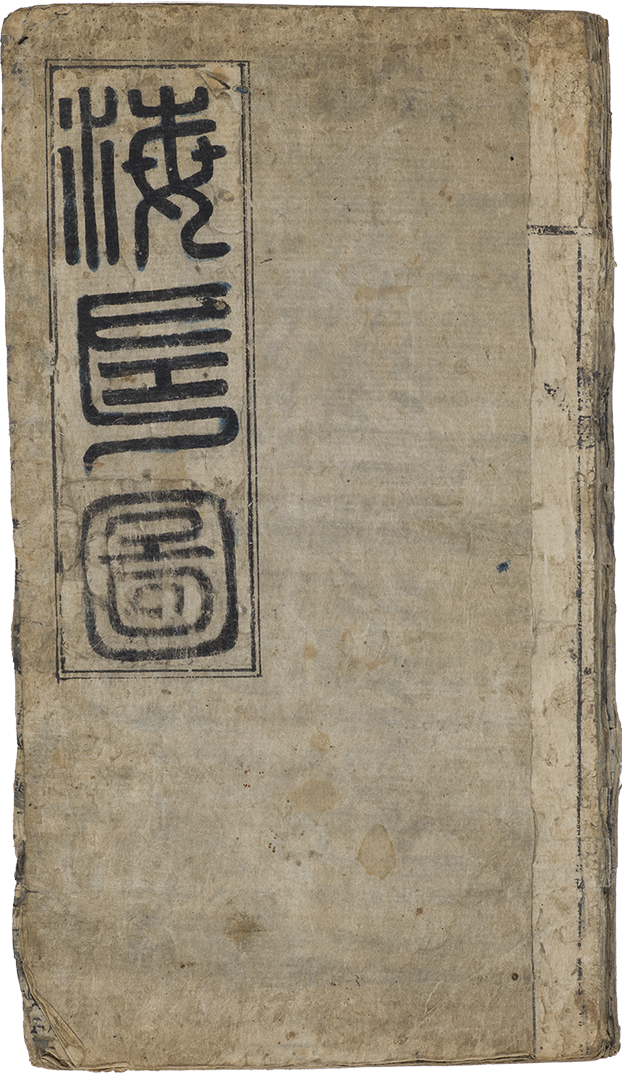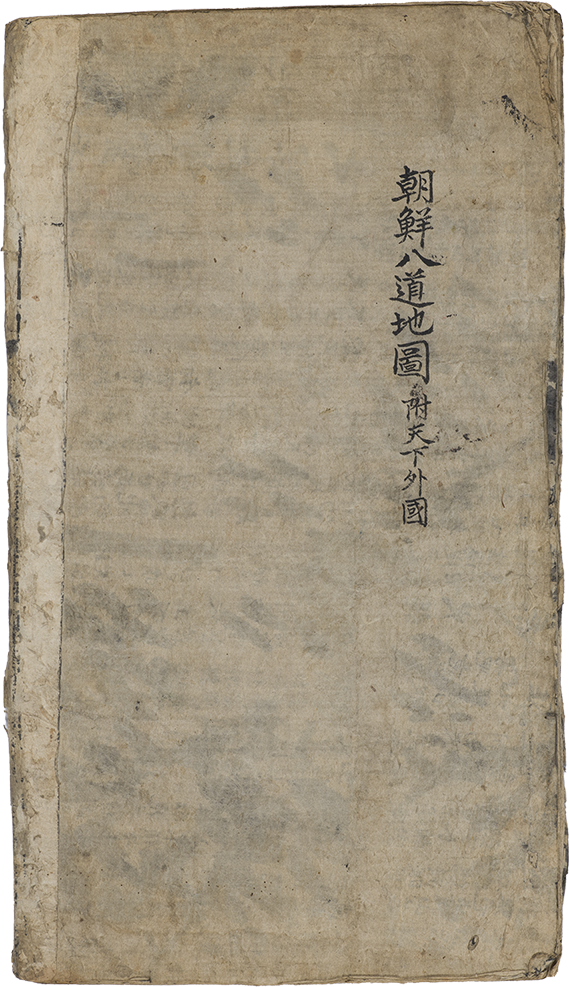The Haejwado
 Front Cover of the Haejwado
Front Cover of the Haejwado
 Back Cover of the Haejwado
Back Cover of the Haejwado
This atlas has a front cover (left) with the title Haejwado, literally “Left of the Sea Maps,”
and a back cover (right) listing the contents. The atlas actually contains individual two-page
maps of each in the following order of appearance: Japan, Korea, the World,
China, the capital region, the inner capital city and the individual eight provinces of Korea.
The title on the cover of this atlas reads Haejwado, literally “Left of the Sea Maps,” an established toponym used in historical Korea. The term Haejwa, like the similar term used in other map titles Haedong, or “East of the Sea,” are traditional names Korea has given itself. The specifics of "left" or "east" are here interchangable in titles and there are two possible understandings of these terms: the first, that the direction of the “left” or “east” is where the sun rises every day and thus symbolizes the birth and creation of all things; or, the second, that it is a spatial reference to a place that is central, that of China, known in Chinese as the “Central Kingdom” (c. Zhongguo). Using a local directional grid in which the throne of the king of Korea faces south, then the direction “left” or “east” of the sea would be geospatially Korea. If the directional grid is more regionally oriented and based on the throne of the Chinese emperor, similar geospatial characteristics are valid. In other words, the Korean throne, like the Chinese throne, faces south, and thus “to the left” or “to the east” of the Chinese throne would be the Korean throne and Korea itself.
On the back cover of the Haejwado atlas, the most complete atlas in the MacLean Collection, is a list of the contents. The large six characters read: Map of the Eight Provinces of Joseon (k. Joseon paldo jido), while the five smaller characters beneath read [map of] the World (k. Cheonha, lit. All Under Heaven) and [maps of] Foreign Countries (k. Oeguk).
The title on the cover of this atlas reads Haejwado, literally “Left of the Sea Maps,” an established toponym used in historical Korea. The term Haejwa, like the similar term used in other map titles Haedong, or “East of the Sea,” are traditional names Korea has given itself. The specifics of "left" or "east" are here interchangable in titles and there are two possible understandings of these terms: the first, that the direction of the “left” or “east” is where the sun rises every day and thus symbolizes the birth and creation of all things; or, the second, that it is a spatial reference to a place that is central, that of China, known in Chinese as the “Central Kingdom” (c. Zhongguo). Using a local directional grid in which the throne of the king of Korea faces south, then the direction “left” or “east” of the sea would be geospatially Korea. If the directional grid is more regionally oriented and based on the throne of the Chinese emperor, similar geospatial characteristics are valid. In other words, the Korean throne, like the Chinese throne, faces south, and thus “to the left” or “to the east” of the Chinese throne would be the Korean throne and Korea itself.
On the back cover of the Haejwado atlas, the most complete atlas in the MacLean Collection, is a list of the contents. The large six characters read: Map of the Eight Provinces of Joseon (k. Joseon paldo jido), while the five smaller characters beneath read [map of] the World (k. Cheonha, lit. All Under Heaven) and [maps of] Foreign Countries (k. Oeguk).